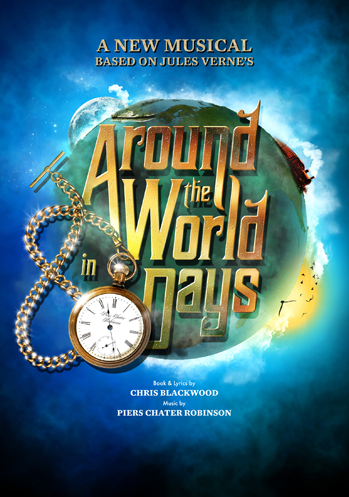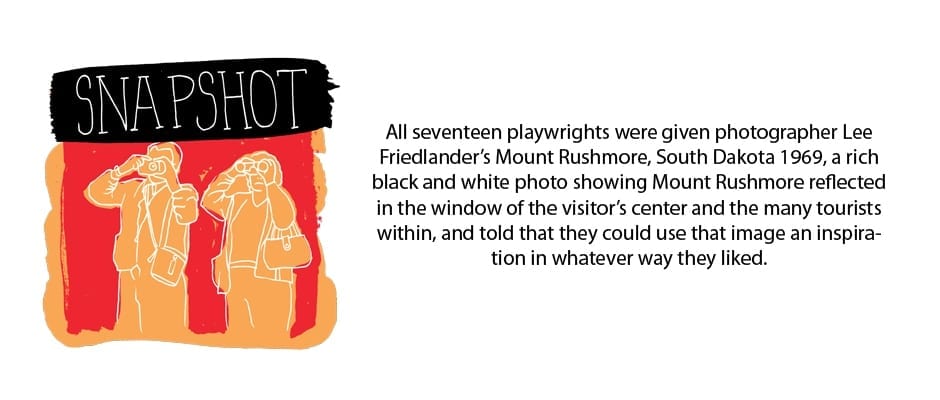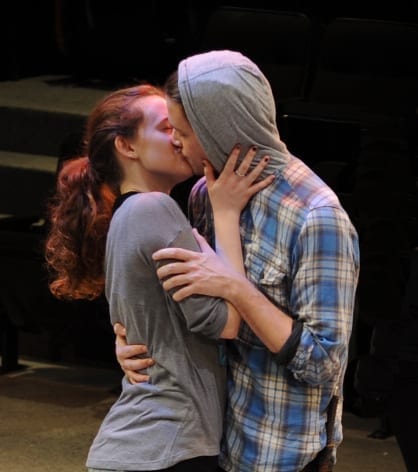PROVO — There are certain shows that know their audience. Some know their audience a little too well. Such is the case with James Arrington’s perennial one man show The Farley Family Reunion, now playing at the Covey Center in Provo. Arrington’s show uses familiar Utah/Idaho stereotypes to create a show that seems almost perfect for Utah County audiences.
The premise of the show is simple and is summed up quite nicely in the title. The Farleys are gathering for their annual reunion. Arrington plays all of the characters (hence, one man show) from Heber, including the septuagenarian emcee and a four year old girl who can’t keep herself still. The audience is also included in the fun, as everyone was welcomed as a member of the family and asked to wear a name tag throughout the show.
The Farley Family Reunion is also unique in the sense that there really isn’t a plot to speak of. The audience gets the basic outline of “family reunion,” but from there it’s really just a series of monologues that don’t really build on one another. That’s not to say that the show needed a plot, but it becomes more of a character study at that point. It’s almost as if Arrington is saying, “Here’s this character, look at the funny way they act. Okay, now here’s this character, look at the funny things they do.” In a sense, this show almost feels more like a ventriloquist and his dummies.
That being said, Arrington is tremendous at portraying the various characters and keeping them separate from one another. He was able to use all facets of his voice and his physical posture to create engaging and distinct personalities. Beyond that, he gave each character their own habits, nervous tics, etc., to add some extra layers to the basic characters. There were numerous times during the show that I thought, “I wish my high school students were here to see this,” because it really was a textbook example of how an actor can use all of their tools to build a character. Arrington’s characters Heber and Leroy were two of my favorites because they were extremely well developed and felt so honest.
The show was quite funny as well. Arrington played off many of the small town Utah or Idaho stereotypes perfectly, including Arrington’s flawless accent (“progrum” instead of “program,” “spert” instead of “spirit”). Like all good comedy there was also that element of truth that really sold it to the audience as well. Many Utahns have a grandpa that tells a story like Heber, or a grandma who sings like Viola, or a loudmouth uncle like Uffie. Arrington’s observations of Utah culture were perfectly astute and were the strength of the script.
However, for me, the highlight of the evening wasn’t the script at all. It was Arrington’s quick wit. As I have said before, this show didn’t feel quite like a normal play. It felt more like a ventriloquist act or a stand-up comedy routine, or even improv comedy. Multiple times throughout the show Arrington would invite the audience to participate or even come on stage with him and he would interact with us while still in character. This led to a number of off the cuff remarks that showcased a true wit in Arrington, and provided for some of the evenings biggest laughs. There were even moments where hecklers needed to be dealt with, and it was done soundly.
Overall, I enjoyed the performance, though there were a few things that were bothersome. Though Arrington was adept at creating many characters, some of the characters started to be pushed to the point of overdoing the clichés. Yes, the stereotypes are what created so much of the humor in the show, but those will only go so far before it starts to feel a little like beating the joke into the ground. I particularly felt this way with the teenage girl character. (The characters weren’t distinguished in the program and I missed her name at the performance.) She was funny, but the obligatory valley-girl portrayal grew old quickly and even felt dated.
Additionally, there were a number of times where Arrington played to the audience for the laughter. This is the kind of wink-wink, nudge-nudge, see-what-I-did-there, look to the audience type of joke. Again, this made the night feel more like stand-up comedy than what most theatre-goers are used to in a typical play. In the end it’s not a bad thing, but it’s an interesting choice to break the fourth wall in this manner, and that’s hard to fit into some people’s typical genre boxes.
Finally, I should mention a few of the technical elements. The set (Daniel James and Gaye Cook) was amazing in its level of detail. It was just a simple house front, but I instantly knew what type of family this was from looking at the eclectic collection of junk in the front yard. I only wish that there had been more interaction with some of the various junk. It looked like there were a number of really fun props that could have been incorporated into the show, but none of the set dressing was used. The costumes (Mary Jane Wadley and Colleen Arrington) were functional and designed for the numerous quick changes that needed to be made. These quick changes were usually simple and done in front of the audience with Arrington continuing to talk as his former character to fill the time.
This style of this show was different than anything that I had experienced before, but the humor was there, the cultural observations were perfect, the characters were fun, and overall it was quite an enjoyable evening. Arrington should be commended on a job well done. If you get the chance, go join the Farley family (literally) for an evening.





